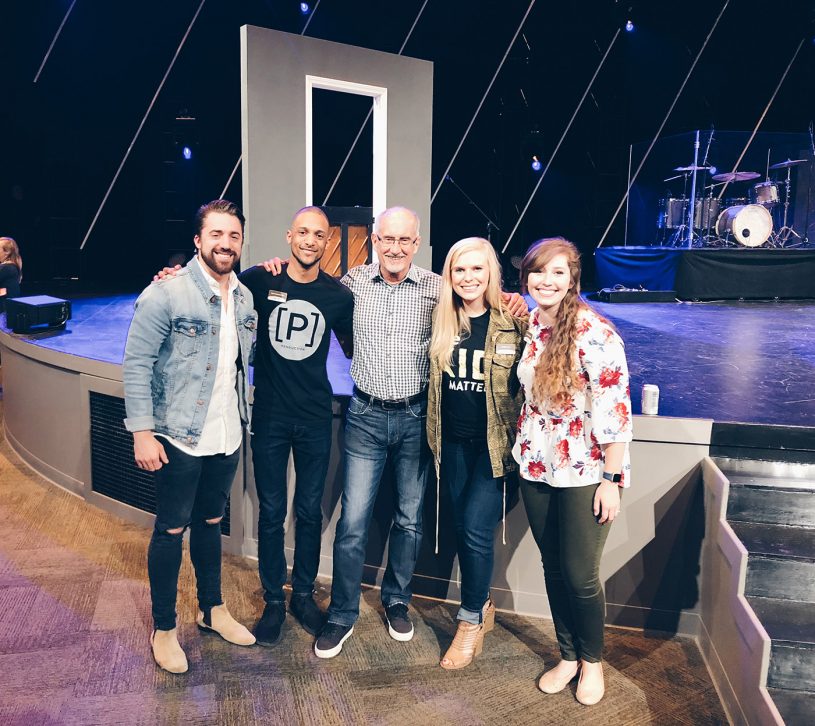Leadership development never takes place in a vacuum.
It’s not a program or event-based.
Leadership development always starts with a leader.
Always.
A leadership culture is an environment where leadership development thrives best. Creating that culture requires deliberate effort and long-term dedication. A leadership culture contains the elements of:
- Championing leadership.
- Teaching leadership.
- Practicing leadership.
- Coaching leadership.
- Empowering leadership
But let me say it again, leadership development always begins with a leader. Someone who will show the way and start. So, don’t worry about trying to build a leadership culture overnight, it takes years for that to truly become part of your culture. You don’t need all the elements at once, and it’s important to get started.

Candidly, you need to build the plane while you fly it.
Start with these two concepts.
- Simplicity
- Consistency
Simplicity. If you don’t keep it simple, you’ll quit. There are far too many requirements in ministry that must happen. From writing the sermon to recruiting leaders for the nursery. There are no options for these things. So, when you are under pressure to cut something, you cut the things that don’t bite back. You cut the things you don’t have to do, like leadership development. Keep it simple, so you’ll stay with it even under pressure.
Consistency. If you don’t remain consistent, you’ll quit, because you won’t get the results you want. We focus on a 7-day turn-around that measures the results every Sunday. This keeps us unaccustomed to the long play. You can’t microwave leadership development; it’s more of a crockpot kind of process. It takes a long time to see results. Development is different than equipping. I wrote about their differences in the previous post. (You can read it here.) With equipping you can see immediate results, but development takes time.
So let me offer the place to start.
It’s a simple plan for leadership development that works.
I want to encourage you by saying I’ve practiced this for 37 years, and have shared it with thousands of pastors. You can trust this process.
The Process:
These three components make up the mechanics of a simple and organic plan.
1) Get a group.
Invite a small number of sharpies to join in a group with you. This is a hand-picked, invite only group. This is not something you announce from the stage or put in the bulletin. Gather 5, 7, 9 — whatever seems like the right number to you. You can invite current leaders, potential leaders, staff, or volunteers, but select from among the best God has given you. I have always led both volunteer and staff groups.
Plan to meet once a month for 1.5 hours. The group should last about 5-6 months but can go a little longer. It’s important that the group does not continue to meet indefinitely unless it’s a staff group. (You can have some of the same people jump in a different group in the future.) And of course, have some good coffee and snacks!!
2) Pick a book.
You don’t need to write a leadership lesson for each time you meet. Remember, keep it simple. Authors invest hundreds of hours into writing their books. And there are so many great books on leadership for you to choose from. Pick one. If you don’t know where to start, I recommend John Maxwell’s The 5 Levels of Leadership.
You can vary the plan as you like, but here’s the basic idea. Your group would cover one “level” of Maxwell’s book each month. That is your content. The group finishes in 5 months! Again, that doesn’t mean they can’t ever be in another group sometime. But don’t let the groups get stale by getting comfortable. This is not a traditional discipleship group; it’s a leadership development group. You could reconvene the same group, for example, the next year if that makes sense. A person might be in one group, or might be in three or four over time. There are so many options, keep it flexible, not a program to march through.
3) Ask two questions.
The two questions are:
- What are you learning?
- How are you applying what you are learning?
You will be tempted to write more questions, and that’s OK, but let me caution you just one more time. Keep it simple.
It will amaze you how deep and rich the conversation will be with those two questions. It’s important to consistently direct the conversation toward (spiritual) leadership in the home, at work, and in the community. Church leadership will come up on its own naturally.
The Power:
These three components deliver the “power” that allows the process to become transformative in nature and truly produce life change.
1) A catalytic leader.
Leadership development always starts with a leader. This is the person who can read the room and is less concerned with getting through the material than cultivating the spark in the huddle that allows the conversation to go where it needs to go, so it lands with impact.
2) A hungry group.
The people in the group must want to be there. This is absolutely essential. They don’t have to be there; they get to be there. They are hungry to learn, missing a meeting is not an option, and they are always prepared.
3) The presence of the Holy Spirit.
This is the big difference maker. You intentionally invite the presence of God’s Spirit in such a way that everyone understands this is not just leadership, but spiritual leadership and the Holy Spirit is bringing wisdom and power for personal growth as a leader.
In 37 years, I’ve never seen this not work. Let me be more clear. If you have all three of these “power” elements in play, I personally have never seen it fail to produce incredible results. If, however, you remove just one of these three, it won’t work.
I wish I had time to tell you hundreds of stories of the changed lives I’ve seen over the years, in hundreds of churches using this process for both staff and volunteers.
Next to the favor of God, everything rises and falls on leadership, and this process will help you raise up more and better leaders!



